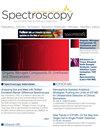结合氦碰撞模式的元素筛选非特异性校准
IF 0.8
4区 化学
Q4 SPECTROSCOPY
引用次数: 0
摘要
元素分析实验室通常只测量少量的元素;例如,美国食品和药物管理局(FDA)元素分析手册(EAM)对电感耦合等离子体质谱(ICP-MS)食品分析的监管方法(EAM 4.7)只规定了12种微量元素。ICP-MS是一种快速的多元素技术,可以测量元素周期表中的几乎所有元素,涵盖从超痕量元素到主要元素的浓度范围。虽然实验室很少需要量化ICP-MS可以测量的所有75种左右的元素,但他们可能会从获得每个样品的总元素含量的更完整的图像中受益。当氦(He)碰撞模式用于最小化常见的光谱重叠时,可以从ICP-MS质谱中提取的有用信息的数量显着增加。一些ICP-MS仪器可以对每个样品进行快速He模式筛选采集,并结合非特异性校准以提供“所有元素”的半定量浓度。He模式筛选可以获得验证性同位素,并检测定量分析中未包含的元素,从而对每个样品的组成提供有价值的额外见解。本文章由计算机程序翻译,如有差异,请以英文原文为准。
Non-Specific Calibration Combined with Helium Collision Mode for Elemental Screening
Elemental analysis labs often measure only a small number of elements; for example, the U.S. Food and Drug Administration (FDA) Elemental Analysis Manual (EAM) regulatory method for food analysis by inductively coupled plasma-mass spectrometry (ICP-MS) (EAM 4.7) specifies only 12 trace elements. ICP-MS is a fast, multielement technique that can measure nearly every element in the periodic table and cover a concentration range from ultratrace to major elements. While labs rarely need to quantify all 75 or so elements that ICP-MS can measure, they may benefit from acquiring a more complete picture of the total elemental content of each sample. The amount of useful information that can be extracted from the ICP-MS mass spectrum is dramatically increased when helium (He) collision mode is used to minimize common spectral overlaps. Some ICP-MS instruments can perform a fast, He mode screening acquisition for each sample, combined with non-specific calibration to give semiquantitative concentrations for “all elements”. He mode screening gives access to confirmatory isotopes and detects elements that were not included in the quantitative analysis, providing valuable additional insight into each sample’s composition.
求助全文
通过发布文献求助,成功后即可免费获取论文全文。
去求助
来源期刊

Spectroscopy
物理-光谱学
CiteScore
1.10
自引率
0.00%
发文量
0
审稿时长
3 months
期刊介绍:
Spectroscopy welcomes manuscripts that describe techniques and applications of all forms of spectroscopy and that are of immediate interest to users in industry, academia, and government.
 求助内容:
求助内容: 应助结果提醒方式:
应助结果提醒方式:


